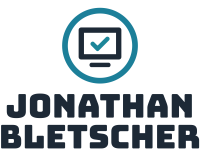In the mini article Habits explained part 1: The habit loop I explained the habit loop and its steps. Let’s now focus on the first step – the cue. This series focuses on explaining habits and how to detect, change or create new and better habits.
The trigger for any habit is called a cue. A cue can be anything over time, location, preceding event, emotional state, or other people. Cues and the learned reaction to it are highly specific per person.
The first step in changing a habit is being aware of it and its cue. What helps me to be aware of my habits is taking inventory. This is a simple exercise: I sit down with a pen and paper and note down all the things I do from morning till evening including when I usually do it or what triggers them(I would say especially focus on the aspects you want to change or keep). Once I have the list, I give a simple rating such as positive, neutral, or negative… Basically, I ask myself is this a habit that benefits me or helps me become the person I want to be?
Here are some examples:
- brushing my teeth after getting up – positive
- making a coffee after brushing my teeth – neutral
- drinking a glass of water after turning on the coffee maker – positive
- …
- when coming home from work, flopping on my couch, and turning on Netflix when I look at the TV or remote – negative
- when I see chocolate in the fridge I eat it – negative
- …
With this, I am now aware of some of my habits and should be able to identify what I want to change. To make it even more transparent you can call out your bad or positive habits if you do them (sounds weird) but it helps to become aware of your actions. Once you repeat it for a while your brain will realize what you are doing and you will automatically get the mental memo when performing a habit 😉
Let’s discuss how to work with the cues to get the desired results.
The simplest rule to follow is: Make it(the cue) obvious or invisible
Make a cue obvious or hard to ignore if you want to build a new habit, and ideally eliminate or reduce cues of habits that you want to stop.
Examples:
- You want to read more: Cue → Seeing a book
- You distribute the books you want to read where you can see them on a regular basis: the kitchen table, the living room table, the couch…
- You want to eat fewer sweets: Cue → Seeing chocolate in the fridge
- Remove all sweets from your home or ask your partner to hide them
More details:
To start a new habit you should set a cue that will serve as an entry point for your behavior. The cue can be a time, a so-called habit stack (meaning an action triggered after finishing an activity that you already repeat on a regular basis), an event or location, etc.
It is important that the cue fits the desired habit in terms of context and frequency.
Changing habits would mean that you replace an action/routine but keep the old cue. Some habits can be best eliminated or reduced by removing cues completely.
These three concepts worked well for me when it comes to working with cues:
- Time and place triggered (be as specific as possible): I will [habit] at [time] in [place]
- Set reminders, make the cues visible
- Habit stacking: Add a habit you want to start after a regular habit that you already do. This works incredibly well. Here is a simple example: after brushing my teeth I will go to the kitchen and drink a glass of water.
- Environmental design: This is super powerful. Deliberately design your environment for the habits you want to have or not. Example: Make watching TV hard by moving your TV to a closet. If you want to eat more healthily → remove all the snacks from the kitchen. Want to read more? Distribute books where you can see them.
- The key to the environmental design is to make desired habits obvious and less desired triggers invisible
In the end, the key to success with habits is that you start being aware. It sounds simple but needs to be practiced like everything else.


Pingback: Habits explained part 3: Craving - Jonathan Bletscher - Leadership, Management, Mindset & Growth